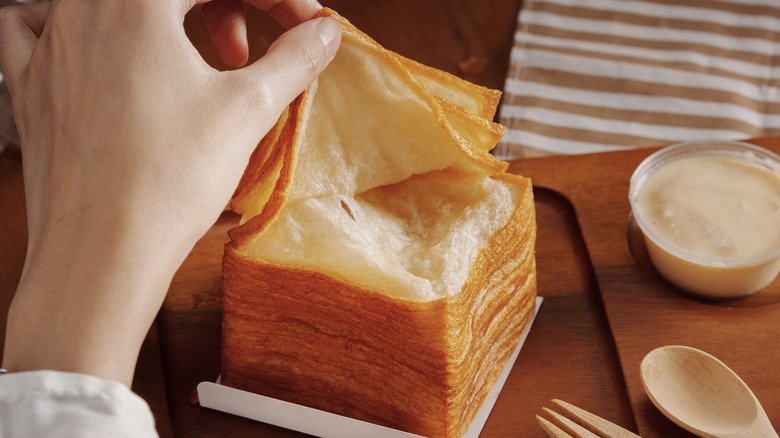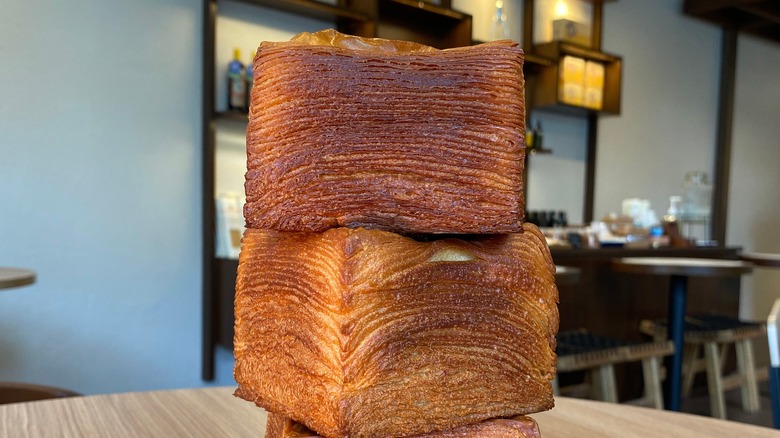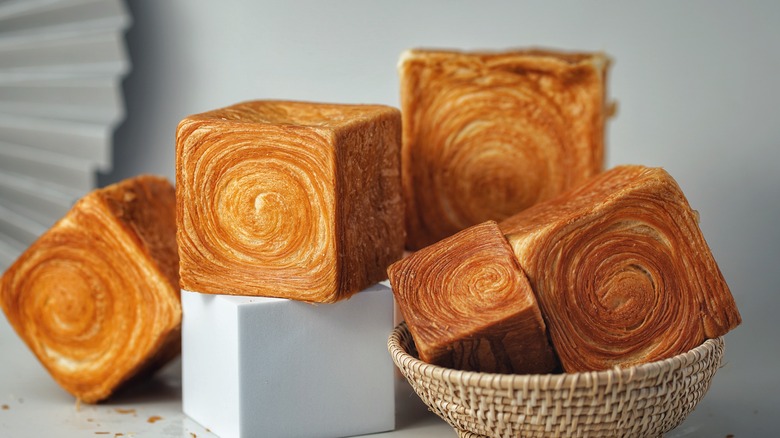Tissue Bread: Does This Viral Korean Snack Really Have 1000 Layers?
The internet age has given us innovative, ingenious bakers all over the world who love to get extremely inventive with new treats. Perhaps the Cronut started it all, but creators have taken the idea and run wild, with mashups like the brookie (excellent in its peanut butter chocolate form) and the croffle (the croissant waffle masterpiece you have to experience), as well as reinterpretations of classics. The latest viral snack comes from South Korea and seems to fall into the latter category, taking a traditional croissant and reimagining it entirely.
At Truffle Bakery in Hannam-dong in the Yongsan District of Seoul, South Korea, you can find something called "Tissue bread." It is essentially laminated, buttery croissant dough that has been stuffed into a cube-shaped baking pan and emerges a masterfully layered, perfectly caramelized, and flaky delicacy that is delightfully referred to as "1000-layer bread" by fans.
While it's clear from videos and photos that there is certainly an admirable number of layers comprising the finished product, there seems to be no evidence that there are actually 1000 of them. This also appears to be a nickname that the internet has devised for this delicacy — the bakery itself refers to its product by its official name: Tissue bread.
Tissue bread at the bakery, or at home
If you're fortunate enough to get your hands on the trendy tissue bread, whether by traveling to the bakery or thanks to a generous friend who carries one home to you, enjoying your bread seems to be as simple as taking a bite and letting the layers melt on your tongue, or peeling apart the layers to stretch out the experience. That said, some lucky internet treat-hunters suggest air-frying or toasting the bread for a crunchy version, slathering it with a jam or nutty Nutella, or even making super-thin sandwiches.
The bakery itself has gotten inventive with putting their treat to use too, creating a tissue bread French toast served with whipped topping and syrup, which certainly seems worth the trip. But if you arrive after they've sold out, Truffle Bakery also offers plenty of other options including salt bread made with rice noodles. It also is possible to make a similar treat in your own kitchen if you feel up for going through the process of laminating dough. You can even make Nutella at home to go along with it. This is a surefire way to get your hands on this stratified bread situation, plus you can rest easy knowing no one will hold you to making good on that "1000-layer" moniker.
More 1000-layer monikers in food
The culinary world has beheld other masterpieces masquerading as "1000-layer," too, There's France's iconic mille feuille — its name literally means "a thousand sheets" or "thousand leaves" in French, depending on who you ask. This is more of a pastry (and is sometimes also known as a Napoleon — a distinction that depends on the type of cream filling).
It also seems tissue bread has a more recent conceptual cousin in the Crubik, a sought-after treat that can be found in Turin, Italy, at the famed cafe, Farmacia del Cambio. That croissant-cube twist — while made in a similar pan to tissue bread — is available with a cream filling (in a rotation of flavors). Like Truffle Bakery, this destination draws lines of tourists and tends to sell out of its creation, so clearly, the interest in square-shaped croissants is cross-cultural, and having a serious moment.
And then there is another type of tissue bread you might find in Indonesia or Singapore, which has more in common with roti than a croissant or pastry. You can also seek out the Dutch-Indonesian spekkoek — also known as the 1000-layer cake — which actually has a max of 18 layers, typically. At the end of the day, perhaps all of these delightful creations could be called out for misleading hungry treat-seekers, but when something is truly delicious, does it really matter what we call it?


